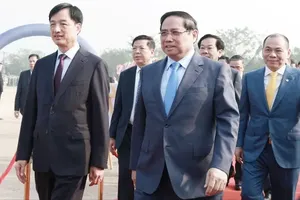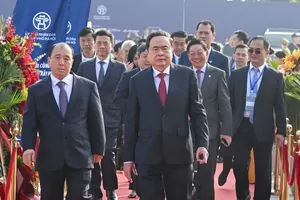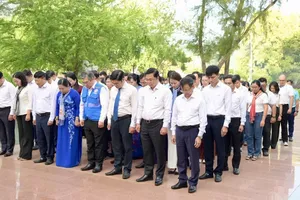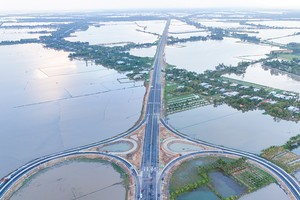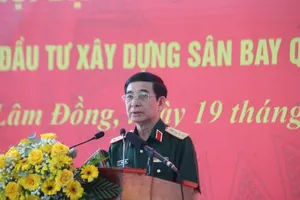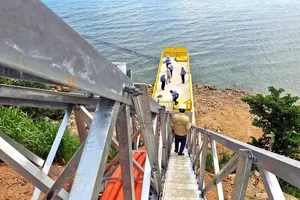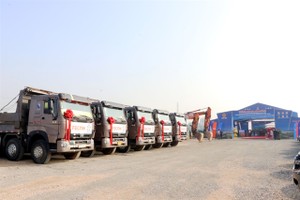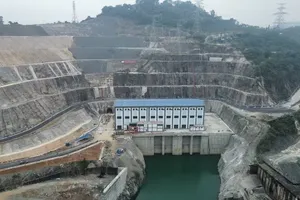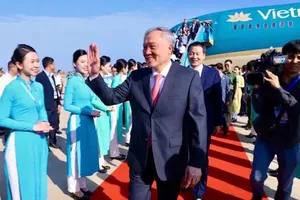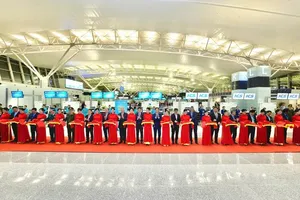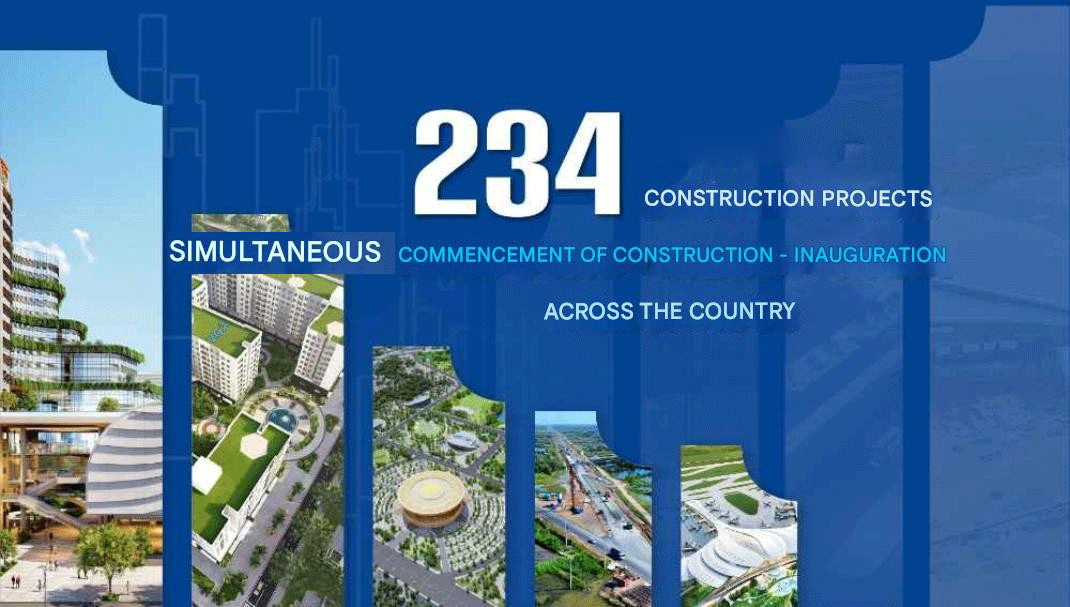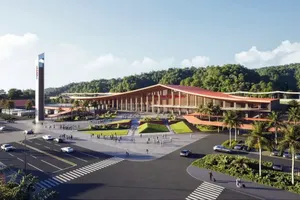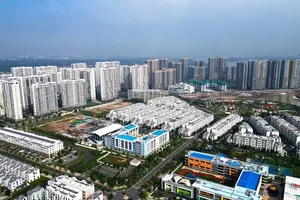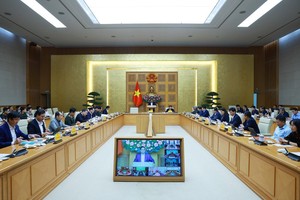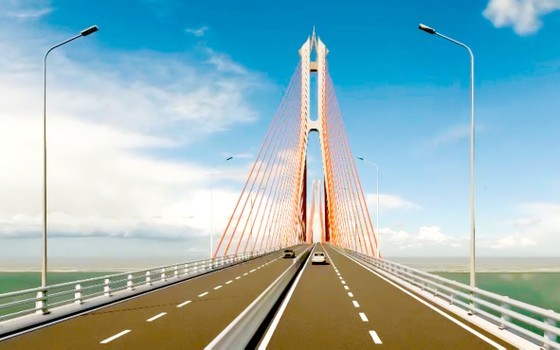 |
Perspective of the cross section and pillars of Dai Ngai bridge |
According to the road network planning in the 2021-2030 period with a vision to 2050, approved by the Prime Minister, the Mekong Delta has 6 expressways for a length of over 1,100km and a width to accommodate 4 – 6 lanes.
One of the expressways to run horizontally is Chau Doc – Can Tho – Soc Trang in the South of Hau River (with a total length of nearly 190km and an investment of VND44.7 trillion, equivalent to US$1.83 billion). Construction has recently started.
The second expressway is Hong Ngu – Tra Vinh in the North of Hau River (with a total length of 188km). it has three sections of Dinh Ba – Cao Lanh, Cao Lanh – An Huu, and An Huu – Tra Vinh. Only the second one has its construction start, using the state budget. The other two will receive investment after 2030.
The third is the Ha Tien – Rach Gia – Bac Lieu Expressway, whose pre-feasibility report is being prepared by the Management Board of My Thuan Project. The investment of the Rach Gia – Bac Lieu section will not come until 2030.
Running vertically are three expressways, the first being the 245-kilometer East side of the North – South Expressway (from Long An Province to Ca Mau Province). The section of Trung Luong – My Thuan with 4 lanes and no emergency lane has come into operation after 13 years of construction. Only after a few month, it has shown signs of overloading. Deo Ca Group JSC. has just proposed to expand it along with its neighboring route of HCMC – Trung Luong under the Public-Private Partnership (PPP) model to have 6 lanes and 2 emergency lanes. The construction is expected to finish in 2027.
The next section of this expressway is My Thuan – Can Tho to be completed at the end of this year, and the last is Can Tho – Ca Mau, with a length of 110km. The latter started at the beginning of 2023 but is 3 months behind schedule due to a lack of construction sand.
The second route is the 180-kilometer West side of the North – South Expressway. The sections of Cao Lanh – Lo Te and Lo Te – Rach Soi are nearly 29km long and 52km long respectively. They are to maintain their own road scale. Only the frontage road system is built, while intersections points and asphalt concrete mats on the road surface are improved to meet the expressway standards. These projects will begin this quarter to complete next year. The section of My An – Cao Lanh with a length of 26km will start at the beginning of next year.
The last expressway is from HCMC – Tien Giang – Ben Tre – Tra Vinh – Soc Trang to reduce the traffic load for the HCMC – Trung Luong one. It is 150km long and will finish after 2030.
Statistics from the Construction Investment Management Department (Ministry of Transport) reveal that until now, the road network in the Mekong Delta has been greatly improved with about 187km of expressways, 2,700km of national highways, and 4,600km of provincial highways. Main areas in the region are linked to this network. However, the proportion of 4-lane roads is only about 13 percent, and the road surface quality is average (65.4 percent).
There are now 8 construction projects for 463km of expressways, attracting an investment amount of VND94.4 trillion ($3.86 billion). They will basically be completed in 2026. Nevertheless, at present, there are still problems in land clearance, ground leveling material, and cost increase that need addressing and reapproval of investment policy. This might increase the working time of the projects.
Experts in the field commented that the tardiness of these projects makes it impossible to simultaneously operate all expressways in the Mekong Delta, and thus congestion might still happen in both the West and East routes, especially during national holidays.
Director Le Quyet Tien of the Construction Investment Management Department informed that leaders of the Transport Ministry have urgently come to building sites to address the issues there with the local authorities. The Ministry has also asked that construction units strive to keep the project schedule, or else they will be fined according to the terms of the contract.
As to the planned but not launched projects, Deputy Minister of Transport Le Dinh Tho said that he has received requests from voters of concerned localities in the Mekong Delta to start the projects soon to serve both daily traffic and goods transport purposes and further socio-economic growth in the region. the mentioned routes include Dinh Ba – Cao Lanh, An Huu – Tra Vinh, Rach Gia – Bac Lieu, HCMC – Tien Giang – Ben Tre – Tra Vinh – Soc Trang.
Yet due to limited investments, the Transport Ministry is unable to start all at the same time. The local authorities should prepare a specific plan to mobilize sufficient capital if they want to launch any such projects in the 2025-2030 period. Only then can the Prime Minister consider and approve the projects sooner.
The Southwest provinces are closely linked to HCMC regarding goods transport, hence congestion happening on gateways to HCMC from these areas is huge trouble to merchandise trading. For instance, the section of National Highway No.1 passing Binh Chanh District of HCMC has only 4 lanes, resulting in continuous traffic jams; the finishing time of the Ben Luc – Long Thanh – Dau Giay Expressway to connect the Southwest and Southeast is not yet available; the connection road from Vo Van Kiet Street to the HCMC – Trung Luong Expressway is temporarily halted. These issues are severely affecting the growth of both HCMC and the Mekong Delta.


